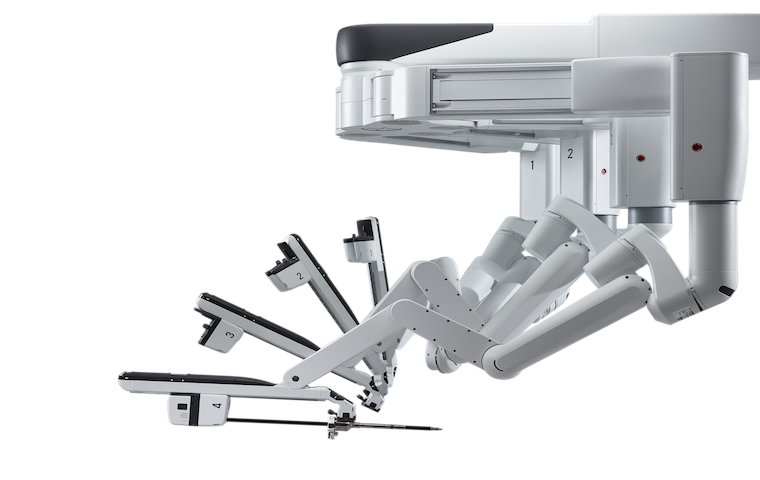
Quick on the Reload
How Andrew Torrance ’19 took a stapler and helped make robot-assisted surgery a little bit better.
Andrew Torrance ’19 knew when he first read about Intuitive Surgical (ISI) that he wanted to get involved.
Headquartered in Sunnyvale, Calif., Intuitive Surgical is a leader in robotic-assisted, minimally invasive surgery. The company, which developed the da Vinci ® Surgical System, specializes in robotic technology that allows the hand movements of a surgeon to be translated into smaller, precise movements of tiny instruments inside a patient’s body.
But it wasn’t just the technology that drew Torrance. Instead it was the impact it could have on the lives of patients. The products created by Intuitive Surgical allowed for surgeries that once required large incisions to be completed with just four small holes as an entry point. Smaller holes meant less pain for the patient and a quicker recovery time.
“Helping people suffer less during an already hard time sounded awesome to me,” says Torrance. “And if I could use my education to help achieve that, I knew it would be a win-win.”
Torrance applied for and secured an internship at Intuitive Surgical, working alongside top instrument engineers at on the New Product Introduction (NPI) manufacturing team for the daVinci Instruments Team.
The engineers on NPI work on a variety of instruments for use on the da Vinci, ranging from a laparoscope—a thin tube with a tiny camera and light that sends images to a video monitor in the operating room—to the EndoWrist ® Stapler, which is where Torrance made his biggest contribution.
The EndoWrist ® Stapler is a medical stapler that closes wounds during surgery. In each stapler is a plastic cartridge of staples that are preloaded. In each cartridge more than 60 tiny staples.
The main focus of Torrance’s work was the cartridge reloads—one of the highest volume parts that ISI produces because the stapler often uses multiple reloads per surgery.
“They’re also hard to make because they hold these tiny little stainless steel staples—you need tweezers to hold them,” says Torrance. “And, you can never have a staple missing, because it could cause the tissue to open up and leak.”
One of the challenges with the reloads is managing friction between the injected molded parts. At the time, ISI applied a lubricant coating on the staple cartridges by taking the reloads and dipping them in a bowl of lubrication.
The lubrication process had been used on other stapler systems. But, this was the first time they had tried to mass produce the cartridge reloads. The result was rather messy since technicians hand dipped the lubricant on to the cartridges from an open top, mesh basket.
“It was slow and made it super thick and ugly looking,” says Torrance.
The process also introduced variables, including inconsistent amounts of lubrication on the reloads, some of which would quickly evaporate before going to use.
Torrance worked alongside automation engineers—they are the “jack of all trades,” working on any projects involving building equipment automation. His solution was to develop an automated system of conveyor belts to move the reloads to a lubrication station where an elevator could lower the reloads into a bath of the liquid.
For this, Torrance had to focus on even the most minute details, like ensuring the pool had the right concentration of lubricant to carrier solution so that the coating wouldn’t get too thick.
By the end of the internship, he helped develop a design for the lubrication station and developed a process to reduce the friction the reloads generated. The new process uses a large dipping machine that automatically maintains the bath level/concentration and dips the reloads for a controlled amount of time.
“That was cool,” says Torrance. “So I ended up doing some equipment design, process development, experiments in design studies on how effectively my design was working, and then at the end, I handed it all off to some of the more junior engineers.”
What he handed off was a manual on how any technician with any level of experience at ISI could operate the equipment safely and effectively to produce the parts the right way every time.
Torrance first applied to Intuitive Surgical because he wanted to do meaningful work. And that’s exactly what he got to do in his internship, he says.
“Sometimes internships get the reputation that—oh well all you do is get coffee. But that wasn’t the case for me,” Torrance says. “I think it’s cool that my work made it onto the line and helped the company in a real tangible way for a very important product.”